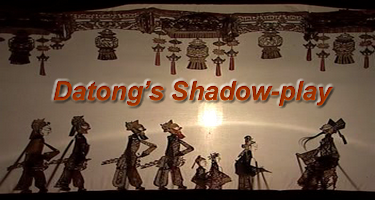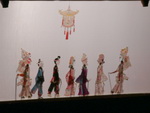 |
|||||||||||||||
|
|
| Datong's Shadow-play History | ||||
As it was said, the Chinese shadow play started from the 13th century, and along with the military expedition, it was introduced into Persian (Iran), Arabian, Turkey, Burma Siasm (Thailand), Malaysia, Japan and Britain, France, Germany and Italy, Russia and other Asian and European countries. From a global perspective, all the famous people like Goethe from the 18th century to the later Charlie Chaplin, all had given high marks to the Chinese shadow play art. It can be said that shadow play is a long history and widely circulated folk art of our country. From the entry of the Manchu to end of Qing Dynasty and beginning of Ming Dynasty, Chinese shadow play had achieved to the heyday of artistic development. Many artists inherited his father's career, and spread several generations of legend. No matter who shapes the film production, the films and popular geographical senses have reached a historical peak. Many first royal families of wealthy were all pleased to ask filmmakers to engrave, build home Seiko shadow boxes and privately support the groups. Large and small shadow groups were everywhere in the towns, almost 20 or 40 in a rural city unsurprisingly. Regardless of holidays, harvest celebrations, prayer worship, wedding banquets, or birthdays, setting up the stage was a necessary. We can imagine the glorious view that they were busy to take a whole night or more than 10 days to write drama, and there were a few shows in a temple at the same time. |
 |
|||
 |
However, the development of Chinese shadow play was not smooth under the historical catastrophes. It has been forbidden and the artists have been caught in the late Qing Dynasty, because some local government was afraid of the dark mob uprising. Shadow artists who have been also implicated by White Lotus uprising in the late Qing Dynasty, was charged by a "mysterious light bandit". The shadow industry was depressed by social unrest and years of war before and after the Japanese invasion. After 1949, the remnants of shadow groups and artists began to re-active in China. Since 1955, the cultural and artistic exchange has been organized with a good progress, such as national, provincial and municipal shadow shows and international visits and performances. However, the "Cultural Revolution" brought the Shadow Art a desperate shock. |
|||
In August 2004, China joined the UNESCO The protection of the Intangible Cultural Heritage Convention.
In 2006, the State Council issued Notice on the Strengthening of Cultural Heritage Protection, which set off a new round of all citizens to protect the cultural heritage of the climax.
In 2008, Datong Shadow as an important part of Hehuang Shadow has been listed into the non-material cultural heritage. |
||||

| Xishan Middle School, Datong County, Qinghai Province |
| Copyright @ 2011 Xishan Middle School, Datong County, Qinghai Province |
